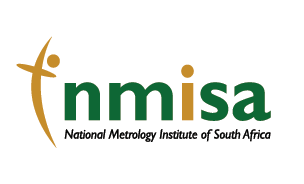Metrology started in South Africa in 1946, with the formation of the National Physical Research Laboratory as a division of the Council of Scientific and Industrial Research (CSIR) under Dr Meiring Naude. The NMISA’s history, however, official started in 1947, when the first calibration records were issued at the then CSIR offices in Visagie Street, Pretoria. By 1950, a brochure indicated that the NPRL was responsible for ‘the ultimate standards of length, mass and pressure, as well as fundamental electrical and temperature scale standards. Calibration services were offered for electrical sub-standards and instruments, thermometers and pyrometers, electro-acoustic instruments, microphones and loudspeakers, with standards for colorimetry and photometry in development. The laboratories relocated to the current CSIR Scientia Site in 1957.
Dr Naude wrote to the International Bureau of Weights and Measures (BIPM) for the first time in 1950 to become a signatory of the Metre Convention, but the process was hampered by the use of, as a British colony, the British measurements, even though the Weights and Measures Act 32 of 1922 indicated some application of the metric system in the Union. After South Africa’s independence from Great Britain in 1961, the new Act 32 of 1962 made provision for the CSIR to be responsible for the measurement standards. South Africa eventually became a signatory of the Metre Convention and member of the BIPM in 1964. Despite restructuring, work focussed on the development of primary standards, and in 1967, South Africa was appointed as a member to the Consultative Committee on Photometry.
A new act, the Measuring Units and National Measuring Standards Act 76 of 1973, was promulgated, establishing the National Metrology Laboratory, and Dr Dick Turner, the then director, had the vision that funding was to be secured from the Department of Trade and Industry (unconnected to the CSIR’s parliamentary grant) to grow the NML to an independent entity.
Finally, with the promulgation of the new Measurement Units and Measurement Standards Act (Act 18 of 2006), the National Metrology Institute of South Africa was established as a new public entity on 1 May 2007, independent of the CSIR. The NMISA is, with the SABS, SANAS and the NRCS, now part of the dti’s Technical Infrastructure family.
The history of the international measurement system.
One of the very first applications of metrology dates back to ancient Egypt and the building of the pyramids, where a “cubit” was used as the length measurement unit for the building of the pyramids. A master cubit was made from marble; equal to the length of the forearm (measured from the elbow to the tip of the middle finger) of the reigning Pharaoh. Foremen of the pyramid building sites had to have their working cubit sticks calibrated regularly against the master cubit, and failure to do so was punishable by death. The cubit was further divided into the span of the hand (one-half cubit), the palm or width of the hand (one sixth), and the digit or width of the middle finger (one twenty-fourth) and the span or the length between the tip little finger to the tip of the thumb. Though the cubit and its divisions were a sound measurement system, the length of the master cubit changed at the death of each Pharaoh.
The need for an international system of measurements that allow countries to compare their measurements in an equivalent manner was initiated by the French, who developed a lucid system, the ‘metric system’ based on multiples of ten. Their work led to the formation of the Metre Convention on 20 May 1875. It is called the Convention du Mètre in French, and is also referred to in English as the Treaty of the Metre). The Metre Convention established a permanent organisational structure for member governments to act in common accord on all matters relating to units of measurement, and oversees the keeping of measurement standards based on the metric system through three international organisations. In 1960, the system of units it established was renamed the "International System of Units" (Système international d'unités or SI). The Metre Convention created the International Bureau of Weights and Measures (BIPM), an intergovernmental organisation under the authority of the General Conference on Weights and Measures (CGPM) and the supervision of the International Committee for Weights and Measures (CIPM). Countries that are signatories to the CIPM’s Mutual Recognition Arrangement (MRA) recognise the measurement capabilities of the other signatory countries.
In 1955, The International Organisation of Legal Metrology (OIML), an intergovernmental treaty, was establish to oversee all activities for which legal requirements are prescribed on measurement, units of measurement, measuring instruments and methods of measurement, these activities being performed by or on behalf of governmental authorities, in order to ensure an appropriate level of credibility of measurement results in the national regulatory environment. The OIML develops model regulations, International Recommendations, which provide Members with an internationally agreed-upon basis for the establishment of national legislation on various categories of measuring instruments.
